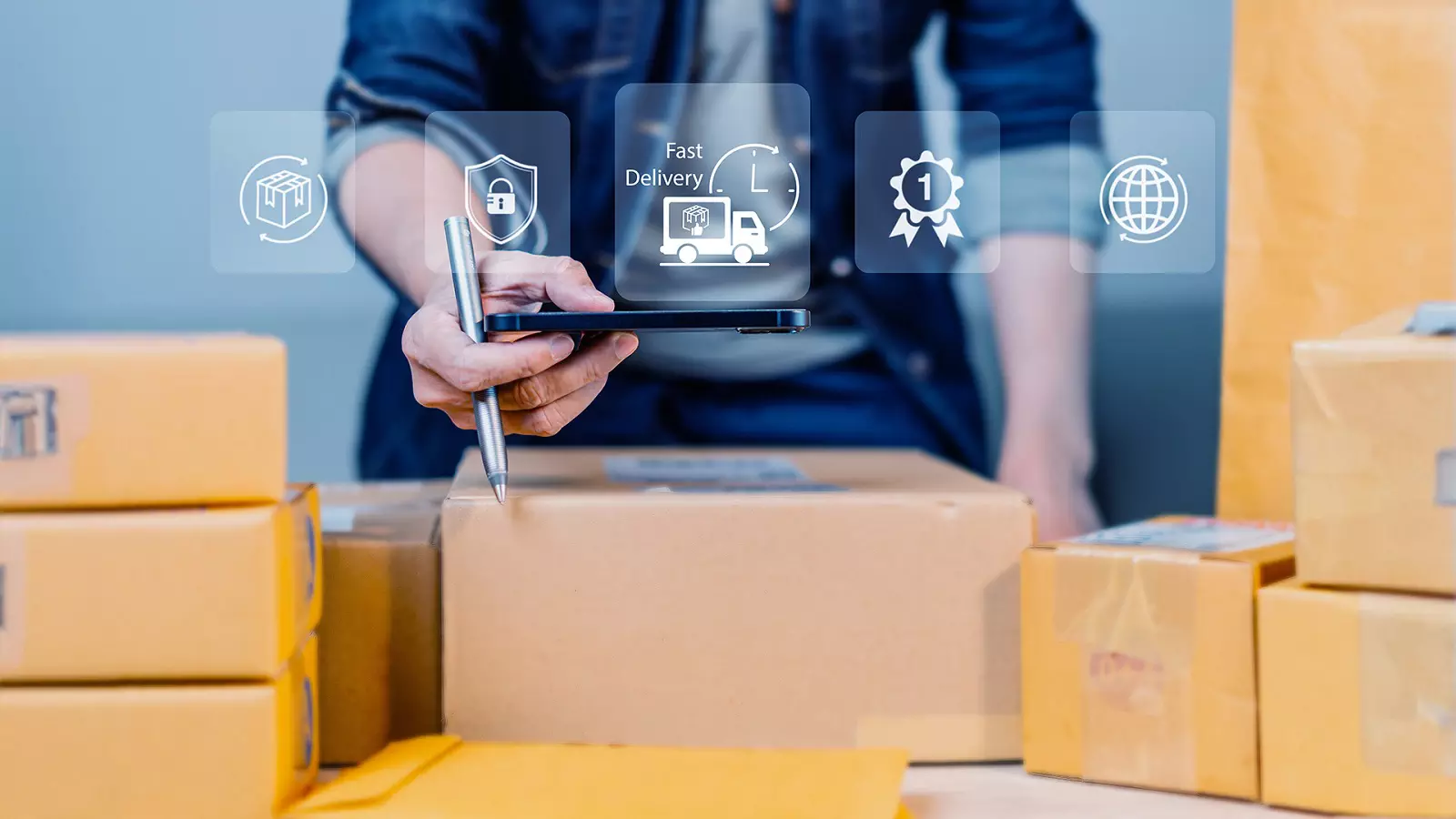In today’s fast-paced world, customers expect their orders to arrive at lightning speed—sometimes within hours. This demand has given rise to the concept of hyperlocal delivery, where businesses cater to nearby customers with swift and efficient delivery services. It’s a game-changer, especially for small businesses operating within city limits.
However, competing with big brands that dominate the market isn’t easy. These giants have the resources to offer free shipping, same-day delivery, and extensive logistics networks, leaving small businesses struggling to keep up. Limited budgets, lack of technology, and operational inefficiencies often make it challenging for small businesses to meet customer expectations and retain their loyalty.
But here’s the good news: advanced delivery solutions are leveling the playing field. With innovations like route optimization, real-time tracking, and affordable logistics platforms, small businesses can now provide the same fast and reliable delivery experience as their larger competitors. By embracing these tools, local businesses can not only compete but thrive in this hyperlocal revolution.
The Rise of Hyperlocal Delivery
What is Hyperlocal Delivery?
Hyperlocal delivery refers to the service of delivering goods within a small, defined geographic area, typically within a city or even a neighborhood. It’s all about speed, convenience, and fulfilling the needs of customers who want their products as quickly as possible. Whether it’s groceries, fashion, electronics, or even pet supplies, hyperlocal delivery ensures that customers get what they need without long waiting times, offering a competitive advantage for businesses catering to these needs.
The Importance in Today’s Commerce
In an era of instant gratification, speed is key. With the rise of eCommerce giants like Amazon and same-day delivery services, consumer expectations have shifted dramatically. Today’s consumers want products delivered to their doorsteps almost immediately. This makes hyperlocal delivery an essential component of modern commerce, particularly for small businesses that want to meet this demand and stay competitive. It’s no longer enough to simply offer great products; fast, reliable delivery has become an integral part of the customer experience.
The Growing Demand for Fast, Local Delivery
Recent statistics underscore the growing importance of quick deliveries. According to McKinsey, nearly 80% of consumers now expect same-day or next-day delivery from local stores. Additionally, 73% of consumers said they would be more likely to purchase from businesses that offer faster delivery options. These trends highlight a clear shift in consumer behavior, with customers prioritizing speed and convenience when making purchasing decisions.
Hyperlocal delivery isn’t just a trend—it’s the future of commerce. The key to staying relevant and competitive lies in embracing this shift and integrating advanced logistics solutions into your business operations.
Challenges Faced by Small Businesses
While hyperlocal delivery presents incredible opportunities for small businesses, successfully implementing fast and efficient delivery solutions comes with its own set of challenges. Many businesses struggle with logistical inefficiencies, high operational costs, and ever-evolving customer expectations. Additionally, common mistakes in hyperlocal marketing—such as poor targeting, lack of real-time tracking, or inadequate delivery partnerships—can further hinder growth. Let’s take a closer look at the key hurdles small businesses must overcome to thrive in this competitive landscape.
1. Limited Resources for Logistics
Unlike big brands with expansive budgets, small businesses often have limited resources to invest in logistics infrastructure. Big players like Amazon and Walmart have the financial power to build out massive supply chains, invest in technology, and hire large teams to manage deliveries. In contrast, small businesses struggle to manage these complex logistics with minimal staff and equipment. They often rely on third-party courier services or local delivery networks, which can be costly and inefficient if not optimized properly.
2. Difficulty in Meeting Customer Expectations for Fast Delivery
The demand for fast delivery is stronger than ever, with consumers expecting products to arrive within hours or by the next day. For small businesses, meeting these expectations can be a significant challenge. Without access to a vast network of warehouses, distribution centers, or delivery partners, small businesses may find themselves unable to fulfill orders within such tight timeframes.
3. Lack of Access to Advanced Technology
The logistics technology used by large companies, such as real-time order tracking, automated inventory management, and route optimization software, is often out of reach for small businesses due to cost and complexity. Without these tools, small businesses are left managing deliveries manually or relying on outdated systems that can result in delays, inefficiencies, and mistakes.
The Role of Advanced Delivery Solutions
As the demand for faster, more reliable delivery grows, small businesses are turning to advanced delivery solutions powered by logistics technology to level the playing field. Innovations in AI, real-time tracking, and route optimization are enabling small businesses to offer the same high-quality, fast deliveries as larger brands—without the need for hefty investments in infrastructure or staff.
How Logistics Technology is Empowering Small Businesses
- Artificial Intelligence (AI): AI helps businesses predict demand, optimize inventory, and improve delivery accuracy. AI algorithms can forecast which products are likely to sell, allowing businesses to plan their logistics effectively.
- Real-Time Tracking: Customers can monitor the status of their orders from placement to delivery. This transparency enhances customer satisfaction and reduces delivery-related inquiries or complaints.
- Route Optimization: Technology helps delivery drivers find the fastest and most cost-efficient routes, reducing delivery time and fuel costs.
Hyperlocal Delivery Services are a perfect example of how technology can empower small businesses to scale their operations and meet growing customer demands for speed and reliability.
How Small Businesses Can Get Started
Adopting hyperlocal delivery solutions doesn’t have to be overwhelming for small businesses. Here’s how they can enhance logistics, improve customer satisfaction, and stay competitive:
1. Choose the Right Delivery Partner
Select a reliable delivery partner that aligns with your business needs. Platforms like Shiprocket offer customizable delivery solutions, multi-carrier integration, and real-time tracking.
2. Integrate Technology for Seamless Operations
- Use real-time tracking to enhance transparency.
- Leverage inventory management tools to avoid stockouts.
- Implement route optimization to save time and resources.
3. Optimize Inventory for Quick Turnaround
Keep popular items in stock, manage SKUs effectively, and consider using local warehouses to ensure faster deliveries.
4. Offer Personalized Customer Service
Provide customized recommendations, responsive support, and after-sale service to build strong customer relationships.
5. Implement Loyalty Programs
Encourage repeat purchases with discounts, referral programs, and exclusive delivery benefits for loyal customers.
Conclusion: Embracing Hyperlocal Delivery for Small Business Success
In today’s fast-paced world, hyperlocal delivery solutions are no longer just a luxury—they are a necessity for small businesses striving to stay competitive. By embracing technology, such as AI-driven logistics, real-time tracking, and sustainable delivery options, small businesses can level the playing field with larger, well-established brands.
The key to success lies in adapting early and investing in the right tools. By offering fast, efficient, and personalized delivery experiences, small businesses can increase customer satisfaction, build loyalty, and grow their market share.
So, take the leap! Start exploring hyperlocal delivery solutions today and empower your business to thrive in the competitive landscape. With the right tools and mindset, small businesses can be the true Hyperlocal Heroes in their communities.





























